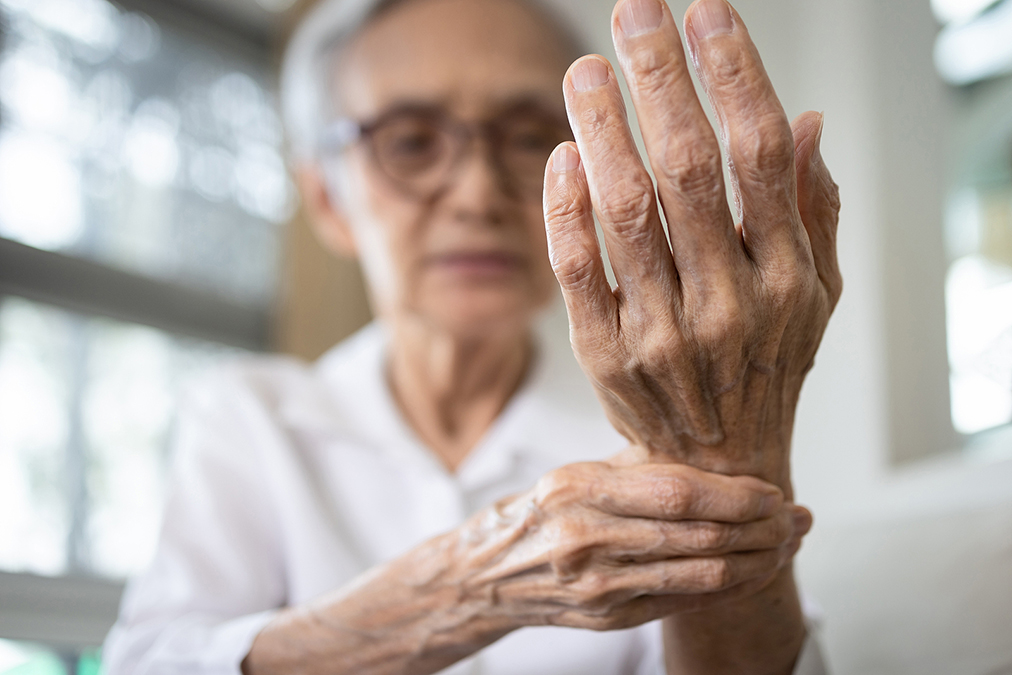 The options for effectively managing neuropathy are limited, often leading patients down a path of trying various medications with varying success and side effects.
The options for effectively managing neuropathy are limited, often leading patients down a path of trying various medications with varying success and side effects.
That’s why the authors of a new study published in the Journal of Pain decided to explore a non-invasive, drug-free approach to alleviating neuropathy symptoms.
And the results were quite amazing.
They picked a wearable device that uses transcutaneous electrical nerve stimulation (TENS) to target pain in the legs and feet, typical of neuropathy.
The trial was conducted across six sites and involved 142 participants with an average age of 63. Over 90% of them completed the study, demonstrating high adherence to the treatment.
Results were promising, especially for those experiencing painful symptoms.
-
1. No significant effects were observed for numbness or tingling.
2. Hot/burning pain declined by 1.37 points on a 10-point scale.
3. There was a 1.21-point reduction in sharp/shooting pain on the same scale.
4. Cramping declined by 1.35 points.
The researchers called this an exploratory trial that should still be confirmed by larger future studies. But it is very promising that TENS therapy might work for those struggling with painful neuropathy, especially because it is convenient and doesn’t interfere with other treatments.
Many TENS devices are already approved by the FDA for the treatment of other conditions like fibromyalgia. That’s why they are considered to be safe and are available for sale to the general public.
However, if you are considering it, you should first talk to your doctor. These devices have a recommended maximum usage per day, and they should definitely be avoided if you have a pacemaker or epilepsy.
So, why do these devices work?
Transcutaneous electrical nerve stimulation uses low-voltage electrical currents to manage pain in two ways.
Firstly, the electrical pulses seem to interfere with the transmission of pain signals along nerve pathways. This stops the communication between the source of pain and your brain, meaning that you don’t feel it.
Secondly, researchers believe that it increases your body’s production of endorphins. Endorphins are natural painkillers made by your central nervous system.
The device works with sticky pads with electrodes that you stick to your skin. You can then adjust the intensity of the stimulation on the unit to which the electrodes attach.

 Overcoming IBD
Overcoming IBD Multiple Sclerosis
Multiple Sclerosis Banishing Bronchitis
Banishing Bronchitis Gum Disease Gone
Gum Disease Gone Overcoming Onychomycosis
Overcoming Onychomycosis Neuropathy No More
Neuropathy No More The Prostate Protocol
The Prostate Protocol Brain Booster
Brain Booster
 Ironbound
Ironbound
 Solution for Shingles
Solution for Shingles
 The Bone Density Solution
The Bone Density Solution
 The Ultimate Healing Protocol
The Ultimate Healing Protocol
 The Parkinson's Protocol
The Parkinson's Protocol
 The Chronic Kidney Disease Solution
The Chronic Kidney Disease Solution
 Overthrowing Anxiety
Overthrowing Anxiety The Fatty Liver Solution
The Fatty Liver Solution The Hypothyroidism Solution
The Hypothyroidism Solution
 The End of Gout
The End of Gout The Blood Pressure Program
The Blood Pressure Program
 The Oxigized Cholesterol Strategy
The Oxigized Cholesterol Strategy
 Stop Snoring And Sleep Apnea Program
Stop Snoring And Sleep Apnea Program
 The Arthritis Strategy
The Arthritis Strategy The Vertigo & Dizziness Program
The Vertigo & Dizziness Program The 3-Step Diabetes Strategy
The 3-Step Diabetes Strategy Hemorrhoids Healing Protocol
Hemorrhoids Healing Protocol The Erectile Dysfunction Master
The Erectile Dysfunction Master Weight Loss Breeze
Weight Loss Breeze The IBS Program
The IBS Program The Insomnia Program
The Insomnia Program The Migraine and Headache Program
The Migraine and Headache Program The Neck Pain Solution
The Neck Pain Solution The Menopause Solution
The Menopause Solution The Ejaculation Master
The Ejaculation Master The TMJ Solution
The TMJ Solution The Acid Reflux Solution
The Acid Reflux Solution The Fibromyalgia Solution
The Fibromyalgia Solution The Psoriasis Strategy
The Psoriasis Strategy